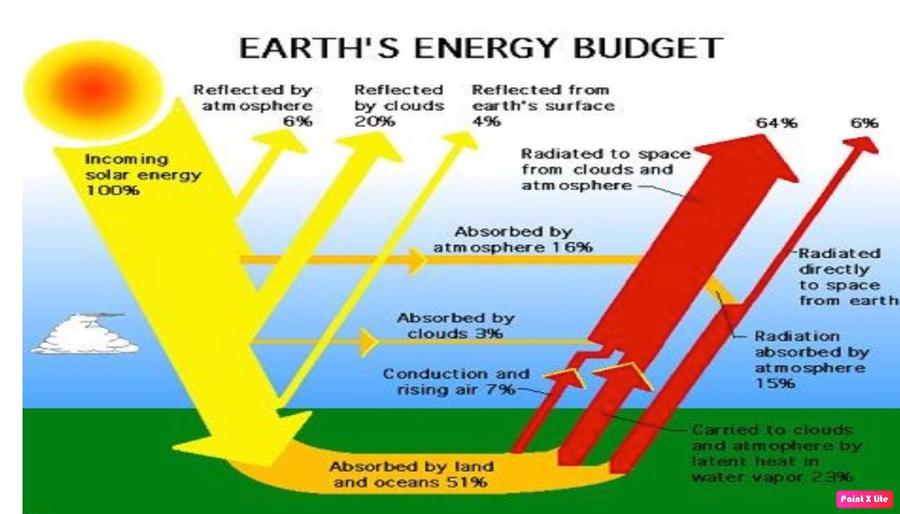Mains Daily Question
March 20, 2024
Q.1 What do you understand by the term Heat Budget of Earth? Discuss how human activities are having an impact on the Earth’s Heat Budget? (10M/150W)
|
Approach for the answer: Understanding the structuring of the answer: The question has two parts. In the first part you have to talk about the heat budget of the Earth and in the second part talk about how human activities are creating an impact on the Earth’s Heat Budget. Introduction: Type 1: Introduce the answer by discussing the concept of Heat Budget. Type 2: You can give some data regarding the Heat Budget. Body: Heading 1: Discuss in detail what constitutes the Heat Budget of the Earth with a neat labeled diagram. Heading 2: Discuss the impact of human activities on the Earth’s Heat Budget. Conclusion: Type 1: Conclude the answer by providing the need to maintain the heat budget. Type 2: Talk about what should be done to address the problems arising out of changes in the Heat Budget. |
Answer:
The earth receives a certain amount of Insolation (short waves) and gives back heat into space by terrestrial radiation (longwave radiation). Through this inflow and outflow of heat, the earth maintains a constant temperature and this phenomenon is referred to as the heat budget of the earth.
|
Heat Budget of the Earth |
To maintain a constant global average temperature, all of the sun’s radiation that enters Earth’s atmosphere must eventually be sent back to space. This is achieved through Earth’s energy balance.
Of all of the solar energy reaching the Earth:
- About 30% is reflected back into space from the atmosphere, clouds, and surface of the Earth.
- Around 20% of the energy is absorbed by the water vapor, clouds, and dust in the atmosphere, where it is converted into heat.
- Around 50% of the incoming solar radiation is absorbed by the land and ocean, and this energy heats up the Earth’s surface.
- The energy absorbed by the Earth returns to the atmosphere through three processes; conduction, radiation, and latent heat (phase change).
Thus, 70% of the sun’s energy is absorbed by the surface, clouds, and atmosphere causing warming.
Most of the energy emitted from the earth’s surface does not go directly out to space. This emitted energy is reabsorbed by clouds and by the gases in the atmosphere. Some is redistributed by convection, while even more energy is released into the atmosphere through condensation. The majority of the energy is absorbed by the greenhouse gases, methane, nitrous oxide, ozone, carbon dioxide and water vapor. These gases constantly emit the sun’s energy back into the atmosphere and keep the Earth at a habitable temperature. Eventually, most of the energy makes its way back out to space and Earth’s energy balance is sustained.
|
Impact of human activities on Heat Budget |
By maintaining a constant global average temperature, the heat budget helps in making the earth’s environment conducive to the survival of living organisms. But human activities have thrown the heat budget out of balance, leading to increasing temperature.
They are impacting Earth’s Heat budget by altering certain factors, like atmospheric aerosols, greenhouse gases, the planet's surface albedo, clouds, vegetation, land use patterns, and more.
- Greenhouse gases: The gases like CO2, Methane, water vapor, etc. emitted due to pollution traps more energy from going out in the form of long wave radiation and thus tends to increase the temperature of the earth.
- Albedo: Global warming which is a consequence of human activities is reducing the snow cover, thereby reducing the albedo of Earth. This tends to increase the heat absorbed by the planet.
- Aerosols: Atmospheric aerosols scatter incoming solar radiation, and a few aerosol types can also absorb solar radiation. Aerosols that mainly scatter solar radiation have a cooling effect. However, strongly absorbing aerosols have a warming effect.
- Evaporation and cloud cover: Rise in global temperatures result in more evaporation which leads to an increase in the water vapor in the atmosphere which traps the solar radiation. However, the formation of more clouds reflects back more of the solar radiation and thus gives a cooling effect.
- Other factors affecting the earth’s heat balance: Concretization of urban areas, change in land use patterns like roads, buildings, deforestation etc, impact heat budget. This is because clear ground has higher albedo and reflects back more radiation.
Earth’s heat budget has been altered towards warming, with the biggest contributor being increase in GHGs concentration in the atmosphere. Thus, there is a need for expediting mitigation measures promised under the Paris Climate Treaty.


